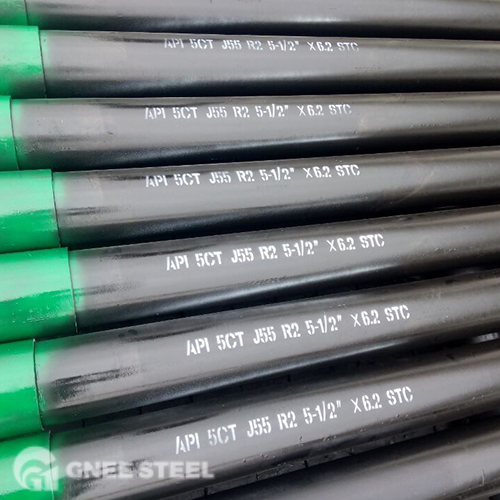In the oil drilling and extraction field, choosing the right pipe material is crucial. J55 and K55 seamless steel pipes, commonly used in the API 5CT standard, are widely used in the manufacture of oil casing, well pipes, and drilling tools. Many people often wonder about the difference between API 5CT standard J55 and K55 steel grades. We will analyze this from multiple perspectives to clearly present the differences between the two.
I. Chemical Composition: Same Basic Requirements
In terms of chemical composition, the requirements for J55 and K55 steel grades are highly consistent. The content of phosphorus (P) and sulfur (S) is strictly limited to ≤0.030%, while there are no strict requirements for other chemical elements. This shared chemical composition makes them similar in some basic properties; however, they differ significantly in other key properties.
II. Mechanical Properties: Differences in Tensile Strength
Yield Strength: Both J55 and K55 have a yield strength range of 379-552 MPa. This means that under certain pressure, their resistance to deformation is comparable, and both can cope to some extent with formation pressure and the weight of downhole equipment.
Tensile Strength: The difference between the two is more significant. K55 has a tensile strength ≥655 MPa, while J55 has a tensile strength ≥552 MPa. K55's higher tensile strength requirement gives it an advantage when facing larger tensile forces. From a practical application perspective, this also determines that K55 can replace J55, while J55, due to its relatively lower tensile strength, cannot replace K55.

III. Elongation: Slight Numerical Differences
Regarding the minimum elongation within a 50.8 mm gauge length of the same size, the elongation of J55 steel grade is slightly higher than that of K55 steel grade. While this difference may seem subtle, it can significantly impact pipe selection in applications requiring high material deformability. For instance, in processes involving bending or stretching, the relatively higher elongation of J55 may be advantageous.
IV. Impact Testing: Consistent Impact Performance
In the CVN Charpy impact test and impact energy requirements for the same size, J55 and K55 steel grades showed consistent performance. This indicates that both are comparable in resisting impact loads and can effectively withstand the impacts that may occur during complex downhole operations, providing stable and reliable pipe support for oil and gas extraction.
Through the detailed comparison above of J55 and K55 seamless steel pipes under the API 5CT standard in terms of chemical composition, mechanical properties, elongation, and impact testing, you should now have a clearer understanding of the differences between the two. In actual oil drilling and extraction operations, accurately selecting the appropriate steel grade pipe based on specific engineering needs and operating conditions is crucial for ensuring smooth operations and improving production efficiency. If you would like to learn more about these two steel grades of pipe, please continue to follow our related content.
